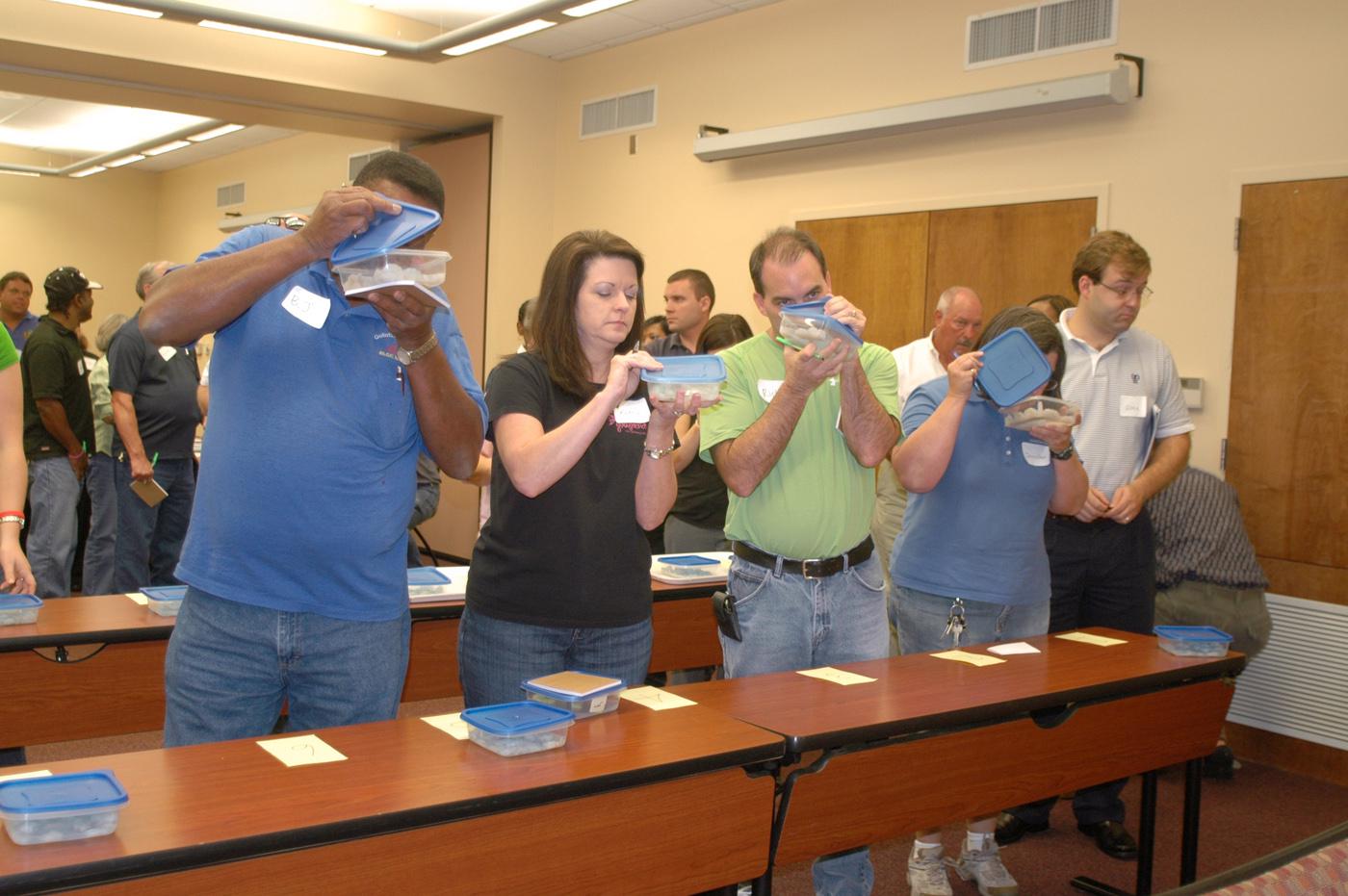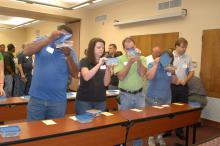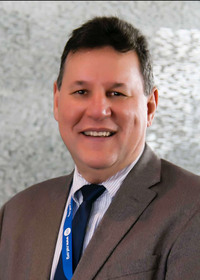Information Possibly Outdated
The information presented on this page was originally released on September 2, 2010. It may not be outdated, but please search our site for more current information. If you plan to quote or reference this information in a publication, please check with the Extension specialist or author before proceeding.
Seafood workers sniff for safety
By Karen Templeton
MSU Ag Communications
BILOXI – The Deepwater Horizon oil spill has presented Gulf seafood workers with their biggest challenge yet, but they are prepared to keep their industry afloat with all the resources they have, including their noses.
On Aug. 26, about 60 seafood workers gathered at the Mississippi State University Coastal Research and Extension Center in Biloxi to learn how to use their sense of smell to identify oil-tainted seafood. The sensory evaluation exercise was part of the Harvest from Open Waters, or HOW, training offered by the Mississippi-Alabama Sea Grant outreach program.
“State and federal agencies have tested shrimp, finfish, crab and oyster samples from our state waters, and all test results have indicated that the samples are not contaminated with oil,” said Dave Burrage, professor of marine resources with the MSU Extension Service. “But seafood workers want to further ensure the safety of seafood by testing at their own facilities. They are guaranteeing that their buyers are getting the best possible products.”
Steve Otwell, a seafood Extension specialist in the Sea Grant Program at the University of Florida’s Institute of Food and Agricultural Sciences, led the training. He explained how to assure the safety of seafood by following HOW guidelines.
“The first step in assuring seafood safety is to make sure it is harvested from safe, open waters,” Otwell said. “A great deal of analytical work has gone into determining open water areas, so we know the products harvested there are safe.”
Otwell said that it is highly unlikely that any oil would be found on seafood currently being harvested from waters that have been deemed safe by the federal government. Seafood workers, however, can further check their products.
“Our sense of smell is our most powerful sense,” he said. “Those working in this industry use their noses in their day-to-day business. Most fisherman and seafood producers can tell by the way the air smells if it is low or high tide.”
Otwell demonstrated how to properly smell-test seafood products by using something called the “bunny sniff.” Participants then used the technique to detect a variety of scents, such as fresh air, putrid, briny, sour and fishy. These sensory experiences helped the group become familiar with the types of odors they can easily distinguish.
Otwell then distributed samples of shrimp and grouper tainted with oil in concentrations as low as 5 parts per million and less. Otwell and his team spiked the samples with oil from the Deepwater Horizon spill because they could not find any contaminated samples in open waters.
“It is amazing how much the human nose can detect, even at such low levels,” Burrage said. “We know Mississippi seafood is of excellent quality, but we are thankful for this extra layer of protection because it can help reestablish consumer confidence.”
Seafood workers participated because they wanted new tools to help them keep their businesses going in spite of the oil spill fallout.
Snip McLendon, plant manager for M&M Processing in Biloxi, said he has been using the sniffing technique in his plant for years, but the training provided him with extra knowledge.
“I think it has helped me become even more familiar with what we should be looking for,” he said. “Also, I am thankful to get more information on the protocol for harvesting in open waters. We’ve been hit with a lot of information since the oil spilled occurred, and it is good to have a training like this to help us keep current with the regulations.”
Otwell said the training helps workers build a sensory memory so they will be able to detect the scents when they go back to their businesses.
“The seafood industry is giving an enormous amount of attention to seafood safety,” Otwell said. “This program demonstrated how to protect businesses in a practical and efficient manner.”









